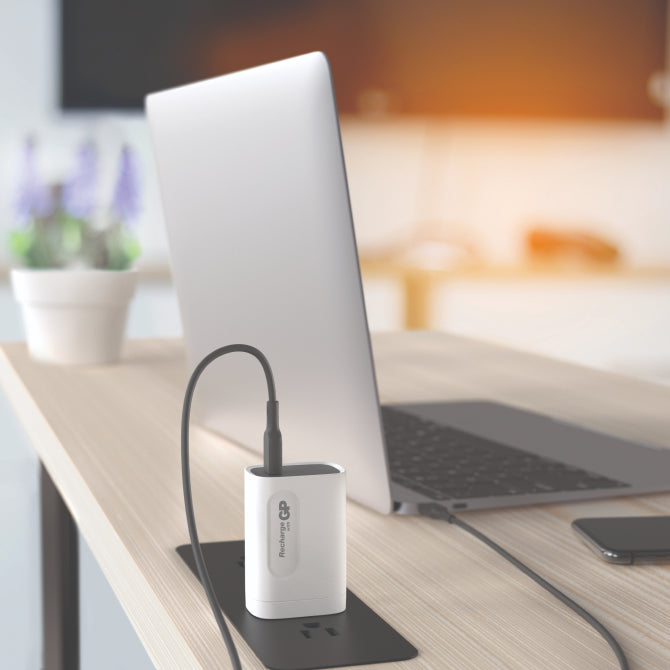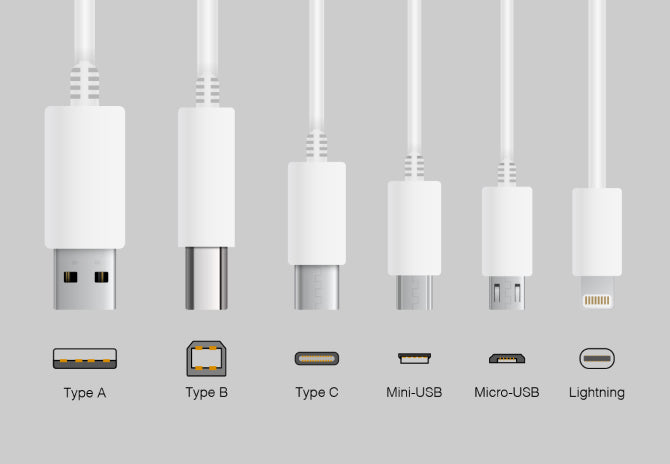

Understanding Different Types of USB Cables For Mobile Charging
Today’s mobile devices come in a plethora of shapes and sizes, and so do their charging requirements, which can become even more confusing when trying to choose the right charging cable for your mobile device, especially as a lot of mobile heavyweights like Samsung and Apple have discontinued supplying chargers with new phones.
Most mobile devices have some form of USB connection, but what are all these different cables for? Why does it matter which one you use?
It can be somewhat complicated to wrap your head around all this. But don’t worry GP Batteries are here to tell you everything you need to know about the various USB cables available and what they do.
USB Types And Their Uses:


Type A
The oldest standard, flat, rectangular interface, you’ll find this on the end of most USB cables. The cable only inserts one way. Computers come packed with USB-A ports for connecting peripherals. Common on TVs, games consoles and older Smartphones and tablets.
Type B
A near square connecter, not often found amongst mobile devices aside from printers and devices that connect to computers. They aren’t very common, and you are unlikely to need one for mobile electronic devices.
Mini-USB
A small connector that for a time was standard for mobile devices, this is no longer the case, the most common place to see these now is on various portable Bluetooth speakers.
Micro-USB
Another past standard, this has been on the decline in mobile & portable devices for a few years now. Even smaller than mini-USB. You may still find the odd phone, tablet, or USB battery packs and game controllers, however, most have moved onto USB-C.
Type-C
The new standard and newest type of USB cable, a reversible connection. It packs more power throughput and has higher data transfer rates than previous USB types. USB-C can also handle multiple functions at the same time. Common on modern laptops, smartphones, and game consoles. This is the new industry standard.
Lightning
Apple’s proprietary connector for iPhone, AirPods and certain iPads. It is not a USB standard; however, it has been a mainstay on Apple devices since 2012. Interestingly newer iPad Pro models now use USB-C.
Don’t Buy Cheap
When it’s time to consider buying a new cable for your devices, don’t be tempted to purchase the cheapest option. Cheap cables suffer from multiple annoyances like slow charging, and unreliable performance. They could also break over time and can even be a fire hazard too! Our GP Batteries mobile cables are crafted with flexible materials, which allow them to be stretched and bent 10,000+ times without a break.
Cable Length is Key
Factor in length, it is really important, shorter cables are great for portability, but might be a hindrance if it leaves you huddled next to a plug socket. Equally a cable that is too long can be a pain to carry, might tangle more and become a trip hazard. All GP Batteries mobile cables come at a 1M standard, which we recommend as the sweet spot. Long enough for portability without encumbrance and long enough to reach a desk. Conveniently they are also made from anti-tangle TPE.
Choose The Right Connector & Adapters
Consider which devices you need a cable for, is it just the one, maybe two or three? Maybe you have a mix of old and new devices? Lightning? USB-C & Micro USB? Luckily for you GP Batteries stock an option to cover all these bases. You might find you are better off with a 3-in-1 cable to save money, and space in a bag and cut down on the number of wall sockets at home used. Our GP cable covers all bases and might be the perfect choice for you.
Hopefully, you better understand USB mobile cables, and which is best for your mobile devices. We know it can be a daunting task to know which is the best option for your use case and remember GP Batteries have you covered when it comes to portable power options.
*GP internal test result for charging a Samsung Galaxy S20 with GP 65W GaN Charger GM3A individually. Results may vary under different conditions.
Let’s Stay in Touch!



